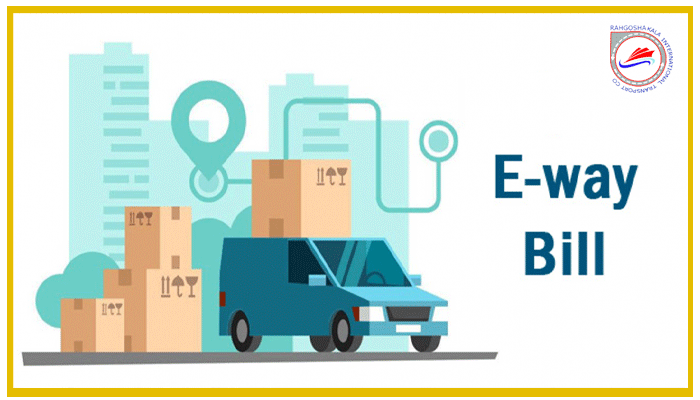An air waybill (or “bill of lading”) is a document issued by a carrier and attached to a shipment. This includes important details such as the name and address of the sender and recipient, a description of the goods and who is responsible for paying duties and taxes.
Think of it as a passport to your shipment, telling customs officials everything they need to know to process and track it. Without it, shipments run the risk of being delayed, lost, or stopped at customs.
How to create a waybill
A waybill is a crucial document in international shipping and logistics that serves several important purposes:
1. Cargo Information: It provides essential details about the shipment, including the sender, recipient, cargo description, weight, dimensions, and tracking information. This ensures that everyone involved has the correct information about the goods being transported.
2. Transportation Contract: The waybill acts as a contract between the shipper and the carrier. It outlines the terms and conditions of the transport, thereby protecting the interests of both parties.
3. Customs Clearance: In international shipping, customs authorities require detailed documentation for the clearance of goods. A waybill is often necessary for customs declarations, helping facilitate the smooth passage of goods through international borders.
4. Proof of Delivery: The waybill functions as proof of delivery, confirming that the shipment has been received by the recipient. It often includes a signature section for the recipient, serving as evidence of the transaction.
5. Tracking and Accountability: Many waybills come equipped with tracking numbers, allowing both the shipper and recipient to monitor the shipment’s progress in real time. This enhances accountability and can help resolve disputes if they arise.
6. Legal Protection: In the case of loss, damage, or delay, a waybill can serve as a legal document, providing a basis for claims against the carrier or other involved parties.
7. Billing and Payments: Waybills are often associated with freight charges, taxes, and fees, facilitating the billing process. They detail the costs associated with shipping, ensuring transparency in financial transactions.
In summary, a waybill is vital for ensuring the efficient, legal, and safe transport of goods across borders, making it an indispensable tool in international shipping.
- The bill of lading is actually a contract between the sender and the carrier that determines the transportation of goods from the origin to the destination.
- Evidence that a shipment has been delivered to the consignee in good condition.
- An invoice for carrier services, including which party is responsible for payment.
- Tracking – via unique ID number and barcode

Read more:Is your business ready to go global?
Who is responsible for the Waybill?
The responsibility for filling out a Waybill is that of the sender of the shipment.
A Waybill can be generated using DHL’s international shipping tool, MyDHL+, when you book a shipment online. You will be required to enter details about the shipment (including the recipient’s information), so have them to hand. Once you’ve provided all required details, the Waybill will be issued.
What other documents do I need for international shipping?
There are several important documents you will need to clear your goods through customs, including a Commercial Invoice, Bill of Lading, Certificate of Origin and import/export licenses.
This may seem complex – especially if you’re a small business shipping to multiple countries. Our dedicated guide to international shipping paperwork will help you navigate it all – including the differences between a waybill .
Filling in a waybill accurately is essential for smooth shipping and delivery processes. Here are some tips to guide you:
1. Understand the Purpose:
– A waybill serves as a contract between the shipper and carrier and provides details about the shipment.
2. Gather Required Information:
– Shipper’s Information: Name, address, contact number.
– Consignee’s Information: Recipient’s name, address, and contact number.
– Service Type: Specify whether it’s express, economy, etc.
3. Describe the Goods:
– Provide a clear description of the items being shipped.
– Include the quantity, weight, dimensions, and any special handling instructions.
4. Label the Contents:
– Use accurate and specific details to avoid customs issues and ensure proper handling.
5. Declare the Value:
– Indicate the declared value of the shipment for insurance and liability purposes.
6. Check for Special Requirements:
– Include any hazardous materials declarations or special handling instructions, if applicable.
7. Cross-Check Addresses:
– Ensure that all addresses are complete and correct, including postal codes.
8. Use Clear Handwriting or Digital Entry:
– If filling it out manually, write legibly. If using a digital waybill, double-check for typos.
9. Include Tracking Information:
– If applicable, note the tracking number for the shipment for future reference.
10. Review Before Finalizing:
– Go over all entered information to ensure everything is accurate and complete.
11. Keep a Copy:
– Make a photocopy or save a digital copy of the waybill for your records.
12. Follow Carrier Guidelines:
– Check the specific requirements or formats required by your shipping carrier.
By being meticulous and thorough, you can help ensure a hassle-free shipping experience.
Rahgoshakala Transport Company is a leading provider of logistics and transportation services, serving . Established More than three decades, the company has earned a reputation for its commitment to excellence, innovative solutions, and unwavering dedication to customer satisfaction
About Rahgoshakala Transport Company
Recognized for its industry-leading performance, Rahgoshakala Transport Company has garnered numerous accolades and awards, cementing its position as a trusted partner for businesses and organizations seeking reliable and innovative transportation solutions. As the company continues to expand its reach and diversify its service offerings, it remains poised to set new benchmarks in the logistics and transportation industry, delivering excellence and exceeding the expectations of its valued clients
Contact our experts